Ren & Stimpy’s History: 30 Years Later

The Ren & Stimpy Show was one of the earliest examples of a sociocultural phenomenon in American animated television. Its characters’ rich set of facial expressions and cartoony gestures, Golden Age of Hollywood-inspired voice acting, plots of infinite possibilities, and especially its vulgar humour made it a big player in early ’90s pop culture. It was simultaneously loved by audiences of all demographics and loathed by authority figures. The former yearned for unique animated content. The latter felt challenged by a cartoon that clearly wasn’t a mere half hour replacement for parenting.
As popular and important as the show is, it seems like it rarely shows up in modern conversations about innovative pieces of animation, and it’s not hard to see why. Courtesy of its now ignominious creator, John Kricfalusi, the show was just as controversial behind the scenes as it was on the air. John K.’s abrasive behavior, professional hostility, and the extent of how dark his worldview actually was, all contributed to the demise of the series, any attempts at bringing it back, and his own career.
While society’s tendency to associate works made by collectives with their most prominent artists has severely bit Ren & Stimpy in the behind, it’s time to remember the show as a product of teamwork for its 30th anniversary, and not fall in the same trap of lionizing one specific person.
The Dark Age of Animation

From the early ’60s to the late ’80s, animation, specifically American animation, was in a pitiful state. The “cartoons are for kids” stigma was at its strongest. All the classic studios were either shut down or rendered irrelevant by the ’70s, with some finally pulling the plug after suffering from painful theatrical rot. TV was plagued by Hanna-Barbera cannibalizing itself, half-hour toy commercials, and cheesy adaptations of other media. Budgets were low, creativity was stiffed, and the wrong people, such as executives and businesspeople, were calling the shots. Beyond the occasional indie marvel and nostalgic treasure, animation was reduced to cynical exploitations of childhood naivete that prioritized stuffy sensibilities over imagination and entertainment. Granted, a lot of works from the medium’s Dark Age have been vindicated over time, but until the ’90s, the animation production pipeline was nevertheless miserable.
Creators Finally Get Their Industry Back

Different people and works have been credited for spearheading the Animation Renaissance of the ’90s. Some point to The Simpsons, a worldwide cultural phenomenon that appealed to every possible demographic and further normalized the idea of adult animation being marketable and appealing. Others take the easy way out and praise Disney, who went from almost going bankrupt to reinvigorating public interest in Golden Age cartoons by releasing Who Framed Roger Rabbit? through its Touchstone label and going back to its classic feature length fairy tale roots with The Little Mermaid. One neglected influence when discussing animation history is the Spümcø crew, including the original founders Jim Smith, Bob Camp, Lynne Naylor, and John Kricfalusi himself.
After constantly attempting to wreak havoc in the world of Saturday Morning toons, these rebellious artists got a chance of bringing back the anarchic, distorted, irreverent filmmaking of Warner Bros., Tex Avery, and Fleischer cartoons. Alongside Ralph Bakshi, a crew of ambitious artists got the chance to do this by reviving Mighty Mouse. The inevitable happened, and things got touchy between the artists and the executives. The crew got another chance a couple of years later. A relatively young channel at the time, Nickelodeon, asked artists to pitch shows for their lineup of “creator-driven cartoons”. This was it. A revolution was potentially starting in this stale realm.

Thirty Years Since the Nicktoons’ Debut
The end result of this chain of events, The Ren & Stimpy Show, was one of three Nicktoons that launched the channel thirty years ago. While Doug was absorbed into the Disney “family”, and Rugrats was Nick’s flagship franchise until SpongeBob SquarePants came along, Ren & Stimpy became one of the most popular shows of the first half of the ’90s, rivaling even The Simpsons in the animation department, and arguably the most profoundly impactful cartoon of the last three decades.
Shocking Success and Electrifying Entertainment

It’s hard to find a show from the last thirty years that wasn’t at least a little influenced by the deranged cat and dog’s escapades. It brought back board-driven writing that Golden Age studios used. Crediting the most important artists that worked on an episode with a title card is an innovation attributed to the show. Its attempts to give as much power to local artists and their vision as possible was unlike anything else at the time. It caricatured life by inserting complex, deeply problematic quirks in its cast’s characterization instead of relying on boorish archetypes.
Most importantly, it blurred the lines between “kiddy” and “adult” entertainment. Unseen for a TV cartoon allegedly aimed at children at the time, it attracted a wide audience of teenagers and adults, especially college students. The supposedly unintended audience was so huge that the show even aired on MTV, where adult cartoons such as Beavis & Butthead, Daria, and Aeon Flux found a home. This matters more than The Simpsons because that show was always seen as being for adults despite its bright colour scheme. Ren & Stimpy was ostensibly family friendly, which made it all the more shocking.

In hindsight, it’s not hard to see why the titular dog and cat appealed to the masses and frightened the killjoys of the time. Despite being corporately reduced to cheap children’s advertisements, cartoons were still beloved by the population. The magic that comes out of endless conceptual possibilities and moving drawings is unlike any other medium. Behind the scenes, the artists were craving a departure from the choppy and formulaic dreck the industry has been encouraging for far too long.
Ren and Stimpy were introduced as caricatures of a chihuahua and a Manx cat. Their looks are so exaggerated that Ren looks like a hairless bug-eyed rat, and Stimpy looks like a perpetually distracted teddy bear. They barely resemble what they represent. Yet, they remain believable in their roles.
The protagonists’ off-putting yet appealing appearances are the icing on the psychedelic cake. The Spümcø philosophy of going as off-model as possible created pose-by-pose, fluid animation, especially for TV standards, where each drawing pops. Individual frames are worth staring at due to their attention to detail, emphasis on the characters’ neuroses, and dedication to principles such as line of action, proper construction, and reliance on visuals alongside dialogue for character acting. Episodes were chaotic meshes of Bob Clampett-like expressions, snappy Hanna-Barbera-esque lines, and Tex Avery-style absurdist scenarios.

Far from being a simple compilation of random gross-out gags, the show at its best had a legitimate edge that played off the eponymous duo’s twisted sensibilities. Ren wouldn’t just get angry, he’d go mad. He can go from sadistic to deadpan to frustrated in seconds, with the animation at its peak reflecting his unstable way of processing things through equally neurotic acting. Stimpy isn’t just stupid, he’s obliviously joyful and gets subjected to the sappiest pathos. There’s a never-ending underlying dopiness to his character that simultaneously contrasts and compliments the show’s undefined hellscape of a setting so effectively. Even then, Stimpy isn’t immune to his world’s uncanny tendencies. His void-staring expressions and simplistic way of processing things go from being endearing to being as off-putting and intriguing as his best friend’s frequent outbursts.
To top it off, the duo’s voices, while clearly throwbacks to classic Hollywood, are distinct and enrich the acting delivered by the animation. Ren’s Peter Lorre-esque voice is an ambiguously Germano-Spanish drawl that spawned many memorable lines and pronunciations, such as the famous outburst “You EEDIOT!”. Stimpy’s Larry Fine-inspired voice, on the other hand, is genuinely innovative. The team wanted to part ways with the tired deep, dopey voice used for every dumb character in cartoons. The contrast between Stimpy’s happy-go-lucky, easily impressionable, and compassionate personality and his “old, depressed Jewish guy” voice is not only funny, but opened the doors to fresher depictions of idiotic cartoon characters.
Without Billy West’s talent and the direction at Spümcø, would Mike Judge have made Beavis sound so nasally? Would Seth MacFarlane have given Peter Griffin such a thick and prominent accent? Perhaps, but they might’ve sounded closer to Patrick Star than what they do now for the sake of familiarity.


The emphasis on the psychosis of clearly messed up characters turned the tables around in a medium that became too reliant on witty one-liners to convey feelings that are too complex to be simply defined by the standardized emotions. The team at Spümcø refused to play it safe. What they ended up making is a contemporary (at the time) throwback to the best Golden Age cartoons: those that could be expressively drawn character studies that caricature the nonsensical elements of our world.
The Rise and Fall of John K.

Ren & Stimpy crashed and burned as quickly as it became a modern classic. Controversies went from revolving around raunchy content delivered by “animation rockstars” to the very messy, and often abusive production cycle. What Bob Camp described as the team’s “shitty ‘fuck you’” attitude led to the downfall of Spümcø’s involvement with the series. Episodes were delayed from the beginning. John Kricfalusi’s perfectionism and the clashes between what the Spümcø crew wanted to put in episodes and what Nickelodeon deemed acceptable for family friendly television contributed to several deadlines being missed, including the very second half-hour show.
When Nickelodeon inevitably fired Kricfalusi in 1992, things instantly got worse. Kricfalusi’s cult of personality went from being Spümcø-exclusive to extending itself to Ren & Stimpy’s audience. He managed to paint himself as a victim of corporate tyranny rather than the instigator of messy scheduling and disloyal dismissal of colleagues, former or current.
The post-Spümcø episodes, made by Nick’s inhouse studio Games Animation, were some of the most reviled cartoons of the era. To the public, and even the artists making the show, Ren & Stimpy, was a rebellious attempt at reviving the paradoxically meticulously maniacal spirit of cartoons that ended up absorbed into the very system it changed. It became a safely streamlined show that pretended to be the edgy piece of entertainment it once was.
Taking Beloved Characters Down With Him

Although there were rumours about Kricfalusi’s lack of professionalism, abusive demeanour toward his employees, and the man already developed an infamously elitist and narrow-minded persona, Ren & Stimpy was given another chance with its original creator a decade after the termination of his contract with Nickelodeon. What came out of this opportunity for a creative free-for-all is one of the most panned mainstream cartoons and an example of how not to reboot a show. Ren & Stimpy: Adult Party Cartoon is self-explanatory: a reboot of a beloved 90s classic with no strings attached. No network censorship. No artistic restrictions. It would go all out with the cartoon vulgarity. Yet, what this show did more than anything was challenge Kricfalusi cultists and legitimize claims that John K. was a very poor colleague.
Just like the original show, Adult Party Cartoon was plagued by missed deadlines and Kricfalusi’s abusively uptight treatment of his workers. A grand total of six episodes were made, and only three of them aired on television. Unlike the original series, Adult Party Cartoon’s content was unable to save it from its messy production cycle. With this show, Ren & Stimpy went from a show that was superficially imitated to being a shallow copy itself.

Episodes were at least twice as long as the originals, and at their worst (Altruists), were almost forty minutes long. The lack of heartwarming moments (for the show’s standards) allowed the show’s raunchy side to take over. The world of Ren & Stimpy went from fascinatingly disturbing to boringly nihilistic. “Ren Seeks Help” is probably the most infamous of the reboot’s episodes, but it at the very least has a structured storyline that attempts to be a character study. It’s a godsend when the alternatives are nonstop gross-out gags (“Onward and Upward”), sluggish pacing that bastardizes a classic episode (“Firedogs 2”), spousal abuse with literal feces as the punchline (“Stimpy’s Pregnant”) and outright pornography that, to describe it mildly, allowed abhorrent realities to slip through. (“Naked Beach Frenzy”).
Ironically, Nickelodeon’s nonstop nagging created part of the series’ charm. If the show had nothing to subvert, it would turn into a snore-fest. Audiences, including Billy West, who refused to reprise his role as Stimpy, understood that, and Adult Party Cartoon not only ended John K’s television career aside from short commissions, but permanently tainted Ren & Stimpy’s reputation. The show was not only a shadow of its former self, but a bad parody of it. The tamer Games episodes from the original series didn’t seem so bad if this is what an unrestricted Ren & Stimpy looked like.
To Quote Mr. Horse’s Walrus Friend…
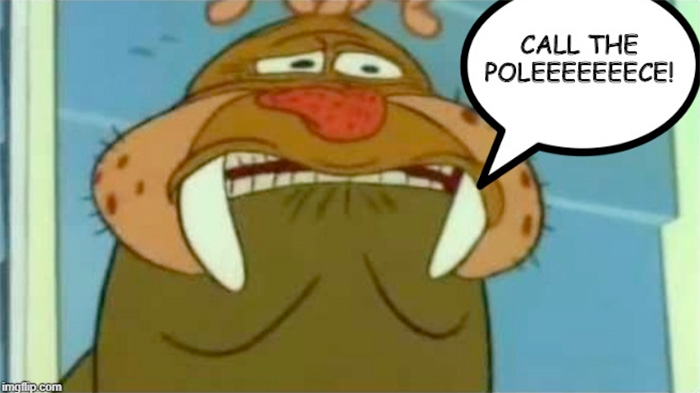
Fifteen years after Adult Party Cartoon’s tremendous failure, John Kricfalusi was unsurprisingly Me Too’ed. The revelations were among the most horrifying in that long streak of exposures. The Buzzfeed article, and the negative reception of the thrice disgraced cartoonist’s Cans Without Labels, released seven years after production started, finally confirmed that all the bad press Kricfalusi got was mired in truth. John K. is a haughty hypocrite that failed to follow his own rigorous advice preached by his controversial blog. He’s an abusive boss whose good ideas were a product of animation’s dire state before the medium’s renaissance. He needed his crew of artists and, ironically, the Nickelodeon executives, far more than they needed him. Worst of all, he used his two most famous creations, symbols of an industry-wide cultural revolution and ’90s phenomena, to take advantage of impressionable fans. A washed-up animation equivalent to Gary Glitter doesn’t begin to describe the man.
[Kricfalusi] Had a Knack For “Fucking It All Up”
As the paraphrased Chris Reccardi quote indicates, Ren & Stimpy paid the price of being associated with such a disgusting creator three times now. Of course, audiences generally tend to associate works with their most significant contributors, and it’s hard to not think of John K. when thinking of Ren & Stimpy. It’s not hard for audiences to make the connection. Kricfalusi pushed his narrative and his views on the show’s history more aggressively than any other creator in the industry.
When writing about Tex Avery, Joe Adamson said that an animated world is “the creation of the director’s own universe, and the maintaining of that universe, that makes animation a medium capable of individual, personal expression, and what allows us to tell one animation director from another.” Cartoons made in the theatrical era followed a hierarchical structure that put the director on top, allowing for truly individualistic visions to emerge in an art form that requires a plethora of different talents.
In a sick amalgam of wanting to bring back the old school spirit of cartoons and desiring to project his authoritarian narcissism onto his colleagues, Kricfalusi brought back the Golden Age production structure for Ren & Stimpy. His influence is predictably massive in the first two seasons. The craziest episodes, nicknamed “psychodramas”, are mostly, if not entirely from his era. He probably wasn’t entirely acting when recording Ren’s notorious mental breakdowns. His notorious daddy issues are displayed onscreen with characters like George Liquor (American!) and the titular boy’s father in “A Visit to Anthony”. That being said, animation is an intensively collaborative medium, and being aware of Ren & Stimpy’s true history, and not the Kricfalusian revisionist tale, is weirdly comforting. When you know that:
- Bob Camp’s directorial and writing contributions were almost as significant as Kricfalusi’s, even before Nickelodeon terminated their contract with John K.
- Lynne Naylor (character designer on Batman: The Animated Series) heavily contributed to the development of the duo’s designs and dynamic, especially Stimpy’s personality and his perspective of his relationship with Ren.
- Bill Wray’s brilliant paintings were solely a product of his own talent and not John K.’s almighty guidance, to the point where Kricfalusi plagiarized Wray’s work for Cans Without Labels.
- Bob Jaques, co-founder of Carbunkle Cartoons, a studio that worked on some of the series’ most well-known episodes (“Space Madness”, “Fire Dogs”, “Stimpy’s Invention”, “Sven Hoek”, “Son of Stimpy”), is the one that convinced Kricfalusi to use a more exaggerated style for the drawings.
- And that John K. committed his worst crimes after he was fired from the show…
…then it’s relatively easier to watch the series without feeling like you’re validating someone associated with scandals that are frustrating at best and horrific at worst.
To make this even better, Ren and Stimpy, while created by John K., were supporting characters in a variety show that was part of the Spümcø team’s several pitches to Nickelodeon. The network’s vice president of animation production at the time, Vanessa Coffey, was only impressed with the cat and dog and singled them out for their own series. That’s right, the executive was almost as responsible for the series’ creation as the artists themselves!
Not a Simple Case of Art vs. Artist, but Recognition of History

The Ren & Stimpy Show is one of the most fascinating cartoons ever made for both context and content-related reasons. As Martin “Dr. Toon” Goodman once said, the show is “an encapsulation of some of our darkest fears, ones in which the soul and body are powerless against a world out of balance.” It’s a modern folk tale of some sorts, one that does not seek to educate its audience by showcasing a depraved world, but to clash with the established morals at the time to give people something they’ve been craving without necessariyy realizing it.
Reconciling with this relic and learning to love it all over again was very much worth it. This is not a call to make this show one of your favourites, but to restore its role in animation history without having to pigeonhole it as John K.’s masterpiece. Although the best episodes were made with Kricfalusi’s involvement, Adult Party Cartoon is proof that the contribution of a group of ragtag artists with a strong point of view made this cartoon work.
Whether you love or dislike this lightning in a bottle, remember that its influence wasn’t just indirect. It was made by people that wound up working on several beloved animated shows (seriously, just look at the late Chris Reccardi’s filmography). Hilariously, John K. is the one member of the Spümcø gang that cannot claim such an achievement. Oh, joy!
What do you think? Leave a comment.



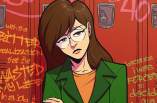
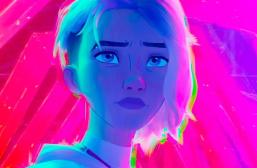

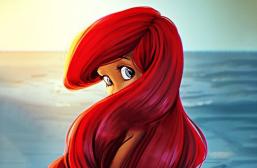
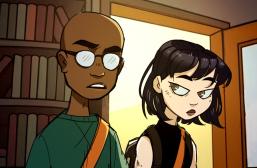



It’s a comedy classic, the equal of Python, Laurel & Hardy, Tex Avery, Mad Magazine etc.
I was gutted about what Nickelodeon did to R+S after they sacked Jon K. They took the best thing on TV by a country mile and just… neutered it. Considering the influence it clearly had on just about every animated show since, I’m amazed they haven’t brought it back.
Spent a lot of my younger days quoting Ren and Stimpy and now quoting Futurama. Billy West has a lot to answer for.
That episode where Stimpy does a fart and has to go searching for it like a lost son has been etched into my brain.
The funniest line was a wildilfe special. Ren is in safari gear, and he says the word ORGANISMS. But very slowly and deliberately, and the camera zooms in to his mouth. Fucking brilliant.
John K was fired, but the next thing you knew fart jokes were turning up in Disney films, and the Shreck franchise made bodily functions and sexual innuendo its stock-in trade. Pretty well every cartoon on TV these days owes a debt to it, but none can hold a candle to it.
Genius! That and Beavis & Butthead kept me very entertained in the early-mid 90s. I remember seeing an episode a while ago and thinking “oh they’ve really lost it, whats happened?!” but reading more about the change after 2 seasons makes sense.
R & S = very, very good. But at the time I was watching the best of the lot – including The Simpsons and Family Guy.
I’ll admit, I only read this article upon recommendation from an online friend. “I think you’d like this one,” was all they said, after passing me the link.
To my surprise, they were right.
I can’t claim to be an unbiased party regarding R&S. For over twenty years, I hid from any trace of this show. It’s only since the start of 2020 that I’ve put in enough exposure therapy work to be able to see or hear Ren without involuntarily shaking.
I don’t claim to speak for the two amazing women who spoke up in 2018. However, I owe both of them a great deal for showing me I hadn’t been alone. My efforts to get JK to see a courtroom at last were dashed by late 2019 (I’d burned and deleted my most damning evidence decades ago), so I’m told I need to add “allegedly” to everything I say, lest I be sued, but. Yes. This show has literally been life-changing for me, and not in a good way.
But I wish the R&S documentary folks could’ve been able to read THIS article, and taken down some pointers. It’s helped my recovery immensely to learn just how much of a part the other staffers played in making this show what it was (to hear it from JK’s mouth, he’d claim to have practically drawn every frame).
This article strikes a great balance at depicting the historical and artistic merit of the show, AND how horrible one person involved with it was, without letting that one person hog both the spotlight and the narrative. I don’t believe the show to be bad, especially now with what I’ve learned, these past few years. I used to love it. More than anything.
Do I now? No. The show seems more like an abusive ex, best left in the past. I can watch my favorite episodes again, and moon over the good old days. But what I know, that so few people remain unaware of– that JK would ALLEGEDLY use my love for Ren as bait for his own interests– is ever in my mind.
So, I want to thank you for portraying this show with all the messy layers any story about it needs, intact.
The sight of Stimpy suckling a nest of newborn clowns was one of the most horrific images that I have ever seen in my life.
Love this. I have a US version I got a few years ago which appears fairly uncut. Also has Adult Party Cartoon which is pretty wild – the one where Ren has one of his ecxreme rages and kills the horse, unforgettable! An even better rage than in Sven Hoek (my alltime top episode).
Anybody steering far away from this show because of the whole John K situation from 2018, as much of a piece of trash as that guy is, always remember to distinguish the creators from their work. (Though John’s actions do admittedly make the sexual undertones of both this show and the Spike TV revival even more disturbing)
They are wild and hilarious often enough, but the show itself is too…gross. Something nasty happens all the time with boogers and other things.
This is one of the greatest cartoons ever made. Together with the animated series from Batman for me though. Most original for sure.
I grew up watching this cartoon all the episodes were funny my favorite was space madness also i like the happy happy joy joy song and log to bad they don’t make shows like this any more.
One of the most subversive/surreal cartoon series of the 90’s. One that makes you think way outside reality, even in it’s more grounded moments. Thanks for the coverage.
When I was little, my sister turned to MTV and an episode of Ren and Stimpy was on. It was the Space Madness episode where Ren and Stimpy are in space and Ren goes crazy. I remember my sister and I laughing when Stimpy was tapping the table and Ren starts to go off. From there, I was hooked on the show.
The Ren & Stimpy Show is just a gross show. Not like “South Park” (a show that reminds us to not overly adore our idols) or “Beavis & Butthead” (which looks at the culture of stupidity that pervades our society).
I have to agree. As far as I could tell, the purpose of this show was to be repulsive just for the hell of it. It seems as if every episode is stuff about bodily function humor. It’s really not good that so much of what passes for children’s shows is this sort of stuff. True, the tykes find urination and defecation entertaining, but wouldn’t it be better to prepare them for the world? My point is, I do NOT recommend this show. Even if it’s not disgusting, it’s borderline cruel. Just avoid it.
My favorite episode would probably have to be Stimpy’s invention, Stimpy wants Ren to try out some of his inventions that he created but of course Ren is not pleased with them. Stimpy starts to realize that Ren is unhappy and decides to make a thing called the happy helmet which can make anybody be happy just by wearing it.
Honestly I enjoyed this so much
Creepy, adorable, relaxing show.
I think I liked Ren & Stimpy simply because they were different and they were edgy for a midday Nickelodeon cartoon.
It was empty-headed, repulsive, nauseating, unfunny nonsense from start to finish. I liked your retrospective more than the show itself. =)
The style of humour is not for everyone. By that I mean that it’s not for me. There are some jokes that I liked, but for the most part it was just odd without much payoff.
I absolutely loved this show growing up, and it still holds up to date. Such a well crafter show. I’m so glad my Dad introduced me to this show as a kid.
I loved this cartoon when I was six years old and I never missed an episode of the show on tv!
I think ren and stimpy was a very classic show. but despite it airing on Nickelodeon it was not for kids. it has lots of sexual innuendo. graphic vilonce like bleeding intestines eyeballs hearts and kidneys all being thrown up into the air.
This show I sort of liked as a kid cause it had humor in it. Looking at it as an adult, its gross and revolting. I mean I know Billy West voices Stimpy in this, but the animation in this show creeps me out. This one episode where Ren and Stimpy are mounties in Canada really creeps me out cause of Ren swallowing bees and I’m afraid of bees and this horse going completely and utterly insane when they’re out in a desert which is unlikely for Canada. They also have dirt for dinner.
There’s also another episode where Ren goes insane and that is really creepy.
Looking back on it, it amazes me just how I was able to get through the gross-out humor in this (especially the Onward and Upward episode, which is, by far, the grossest episode ever made, original series or Adult Party Cartoon version and I’m not in any rush to see that one again anytime soon) and I can see that as the perfect reason as to why not everybody may have been into this.
My favorite character is probably Ren because he is very hot-tempered with Stimpy.
It reminds me of another animated show – INVADER ZIM. A lot of people on the Internet might have you believe that INVADER ZIM is the greatest cartoon of all-time. It’s really stupid, though.
Gross and nasty but funny and a riot at it’s best.
I give the show credit for being creative, having some genuinely funny moments, and having interesting characters but the show is just so disturbing and disgusting that I don’t find it really amusing. The show can give me a headache at times.
I love this show. I love everything about it. It’s a cartoon masterpiece that should be watched by anyone of any age.
Unfortunately, Cartoons are not made like this anymore!! This cartoon will always remain in my hearts as one of the greats!!!
RIP Nickelodeon’s nicktoon era 1993-2005.. wee going to miss this era. 🙁
Ren and Stimpy was seriously one of the greatest shows in cartoon history! Its not what you usually see in children’s shows which is why I love it!
I used to be crazy about this show back in the day. But now I’m not into it so much anymore, not as much as I used to be, so in recent years I consider it somewhat of a guilty pleasure.
This show was pure, off the wall, random hilarity.
Nickeolodeon really did it with themselves in the 1990s!
Favorite episode would have to be Stimpy’s Big Day.
Never a fan of the show (not my taste) but I think it’s a good overview of the show itself.
The first season is the best. With episodes like In The Army, Powdered Toastman, or my favorite Visit to Anthony’s.
There’s something hypnotic about “Ren and Stimpy”. I was a huge fan when I was younger and even now if I re-watch any of it I find it hard to look away. Definitely a one of a kind cartoon!
I really enjoyed Ren and Stimpy as a child, but adult party soured me on the franchise. This write was very well done.
John K stuff aside, I really enjoy the fact that R and S dared to be different. Nowadays I feel like children’s entertainment is so dull in an effort to not be offensive.
I went absolutely hog wild in late 2020 on this show. I watched it all, uncut and un-aired episodes & Adult Party Cartoon (definitely the worst of the bunch). It did irreversible things to my psyche.
My autistic self fell down a rabbit hole, hyper-fixating on this and on John K. It lasted about a year, discovering (and stalking) so many people and topics. It’s insane. I should be ashamed of my antics but I just can’t seem to hold myself accountable. I did all this in relative secrecy, only those close to me know how far I reached in my seemingly unending and insatiable drive for knowledge which I still hold to this day.
I do absolutely adore this show, and I started off knowing about John and what he did, so everything suspicious and seedy was very obvious with the upfront hindsight I had. And the APC episode intros, WOW. Oh my goodness gracious, those were awkward having to see his face and one of his victims. I feel very bad knowing he practically got away from it all scot-free. I’m glad to see those who he hurt are healing and I wish them the best.
My art style had an extreme noticeable swing leading up to & during all of this. I’d say it’s for the better. Sometimes I just wish it didn’t have to be associated with the cloud of disparity that hangs over this series. Focusing on the other (less problematic) people that made Ren & Stimpy make it easier to cope with my guilty joy for R&S. Separating the art from the artist sounds simple enough on paper, but it can be pretty hard in practice.
My dreams still feature John occasionally and it’s sad because I wasn’t even close to being a victim, but I have no control over them and I simply brush them off whenever I do have them. There has only been one that genuinely disturbed me and I hope it stays that way.
I really wrote a whole dang essay in the comments here but I felt that I had to share my two cents. Adiós.